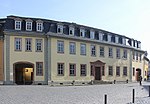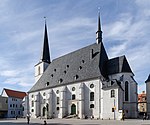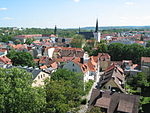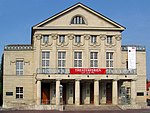Goethe-Nationalmuseum

The Goethe-Nationalmuseum is a museum devoted to the German author Johann Wolfgang von Goethe, in the town of Weimar in Germany. Originally comprising the Goethe House, where Goethe lived intermittently for 50 years from 1782 to 1832, the museum was founded on 8 August 1885 as a result of the will of Goethe's last living heir, his grandson Walther von Goethe, who left the Goethe House to the state.After the Land of Thuringia was formed, the Goethe-Nationalmuseum, along with several buildings erected during the classical age and the Weimar palaces, became the property of Thuringia. In the 1920s, more Weimar buildings were assigned to the Goethe-Nationalmuseum. In 1953, these buildings became the property of the "Nationale Forschungs- und Gedenkstätten der klassischen deutschen Literatur in Weimar, NFG" (national research establishments and memorials of German classical literature in Weimar). Since October 1991, the Goethe-Nationalmuseum belongs to the "Klassik Stiftung Weimar" (foundation of Weimar classicism) which succeeded the NFG. It administers the main house and 22 other historical houses and museums throughout and around the Weimar municipal area.
Excerpt from the Wikipedia article Goethe-Nationalmuseum (License: CC BY-SA 3.0, Authors, Images).Goethe-Nationalmuseum
Frauenplan,
Geographical coordinates (GPS) Address Phone number Website Nearby Places Show on map
Geographical coordinates (GPS)
| Latitude | Longitude |
|---|---|
| N 50.9776 ° | E 11.3287 ° |
Address
Goethe-Nationalmuseum (Goethes Wohnhaus)
Frauenplan 1
99423 , Altstadt
Thuringia, Germany
Open on Google Maps











